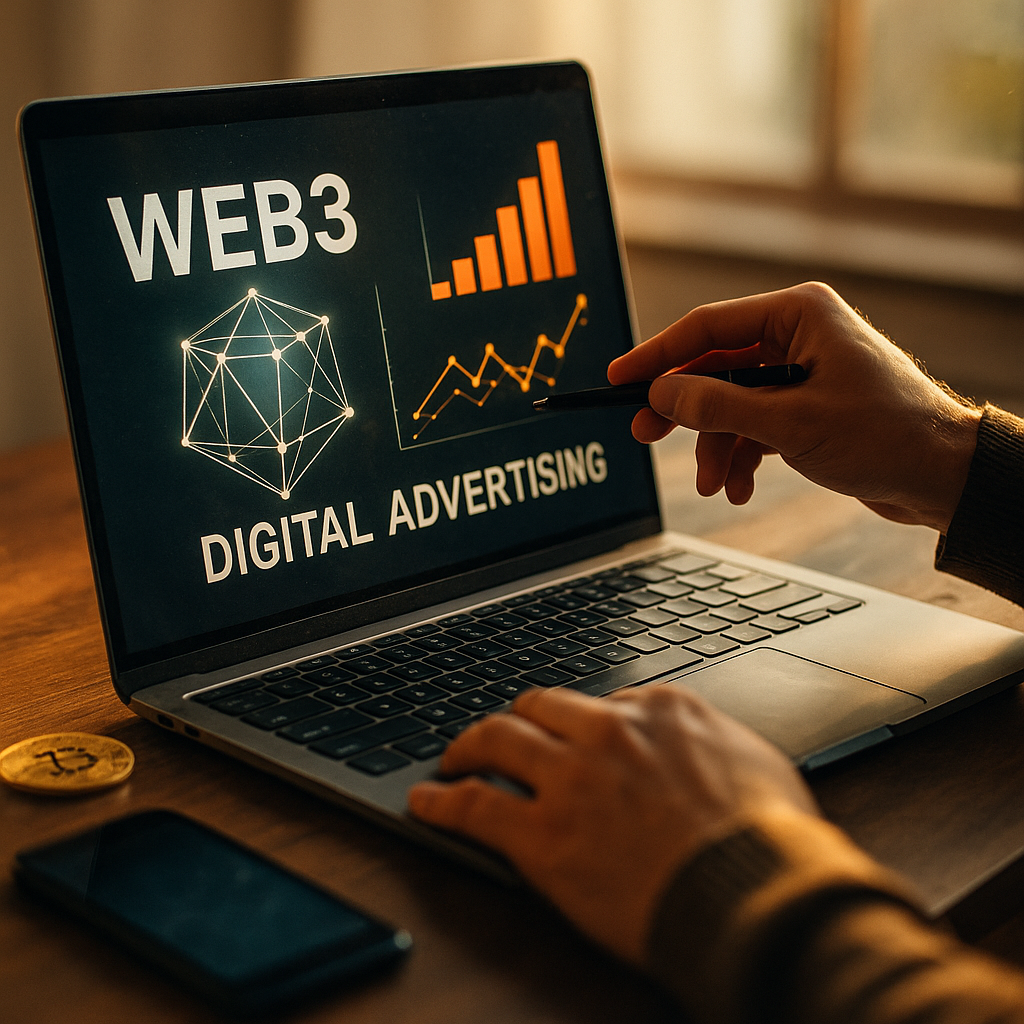The impact of Web3 on the future of digital advertising is already reshaping how brands, agencies, and consumers connect online. Decentralization, blockchain, and privacy by design are driving rapid change. How will advertisers adapt to this evolving landscape and what does it mean for the advertising ecosystem? Dive in to discover the disruptive power of Web3 on digital marketing’s horizon.
Decentralization: Revolutionizing Online Advertising Models
Web3’s core principle of decentralization disrupts the traditional ad industry, placing power back in the hands of users and content creators. Unlike centralized platforms that control audience data, Web3 advertising solutions, such as blockchain-powered ad networks, enable transparent and peer-to-peer transactions. This shift empowers content creators to monetize their audiences directly, while consumers gain more control over their data and experiences.
Decentralized ad networks, including Web3 startups and DAOs (decentralized autonomous organizations), remove intermediaries, reducing fees and increasing the efficiency of ad spending. The peer-driven approach allows advertisers to target engaged, intent-driven communities instead of broad demographic buckets—a fundamental evolution that turbocharges ROI and brand authenticity in 2025.
Privacy and User Data Control: The New Standard in Programmatic Advertising
Heightened demand for privacy-first experiences is reshaping programmatic advertising. With Web3, personal data is no longer the property of large platforms. Blockchain-backed digital IDs and cryptographic technologies allow users to authorize selective data sharing with brands, making opt-in advertising campaigns possible without sacrificing privacy.
The elimination of third-party cookies by major browsers and the rise of privacy regulations have accelerated the adoption of Web3 identity frameworks. For advertisers, this means forging greater trust with audiences. Instead of opaque algorithms, smart contracts govern ad transactions and audience targeting, providing traceability and transparency while respecting consumer autonomy. The result is a win-win: more relevant ads, less intrusive tracking, and compliance with global privacy laws.
Tokenization and Crypto Rewards: The Rise of Engagement Advertising
Tokenization is transforming how brands incentivize consumer engagement. In the Web3 economy, advertisers can reward users with fungible or non-fungible tokens (NFTs) for watching ads, engaging with content, or sharing brand-related assets. These tokens may grant access to loyalty programs, exclusive experiences, or discounts—redefining the value exchange between brands and audiences.
This direct exchange of value fosters genuine participation, higher click-through rates, and sustainable loyalty. By leveraging blockchain for instant verification, advertisers can deliver seamless, fraud-resistant incentives to active users. Early data from 2025 shows a surge in engagement ad formats, with brands reporting up to 30% higher interaction rates compared to traditional campaigns.
Transparency and Fraud Prevention: Elevating Trust in Digital Campaigns
Ad fraud has plagued the digital marketing industry for years, costing billions in wasted spend. Web3’s transparency features combat these issues directly. Every transaction—from the placement of an ad to its impressions and conversions—is immutably recorded on a distributed ledger, accessible to all authorized parties.
This immutable record-keeping deters click fraud, bots, and impression inflation. Advertisers can independently audit media buys in real time, validating both the ad’s delivery and the audience reached. As ad verification becomes standardized through smart contracts, all stakeholders—from publishers to brands—benefit from trust, efficiency, and measurable outcomes, eliminating costly ambiguity.
Community-Led Brand Storytelling in Web3 Advertising Ecosystems
Brands are rethinking storytelling and engagement in the Web3 environment. With decentralized platforms and social tokens, loyal communities participate in brand decision-making, content creation, and governance. This collaborative approach strengthens emotional bonds, encourages advocacy, and generates organic reach beyond paid campaigns.
For marketers, embracing a community-led mindset involves co-creating campaigns, launching branded NFTs, or hosting on-chain events. Real-world examples in 2025 include global companies crowdsourcing ad concepts from holders of branded tokens, or rewarding top community contributors with voting rights or exclusive digital collectibles. This democratization redefines brand loyalty for the digital era.
Challenges and Opportunities: Navigating the Web3 Advertising Landscape
Despite its promise, Web3 advertising presents unique challenges. Technical complexity, interoperability issues, and the learning curve for both marketers and consumers require investment and education. Regulatory uncertainty, particularly around crypto incentives, demands ongoing adaptation.
However, the opportunities outweigh the obstacles. By 2025, agencies and brands equipped to embrace blockchain, token economies, and privacy-first strategies are seeing higher campaign ROI and improved audience retention. Early adopters gain a first-mover advantage, with transparent, trust-based relationships that position them at the forefront of digital advertising’s next evolution.
FAQs: Web3 and the Future of Digital Advertising
-
What is Web3 in the context of digital advertising?
Web3 refers to a decentralized version of the internet, where users control their data and interactions. In advertising, it means leveraging blockchain, tokenization, and decentralized networks to deliver personalized, privacy-respecting, and transparent ad experiences.
-
How does Web3 improve privacy for online advertisers?
Web3 enables users to selectively share data with advertisers via encrypted digital identities and smart contracts. This opt-in model increases trust and complies with privacy regulations, while allowing advertisers to target audiences more authentically.
-
Can brands reach target audiences effectively using Web3 ad platforms?
Yes. Decentralized ad networks focus on engaged communities with shared interests, often delivering higher engagement and conversion rates. Brands can build direct relationships and measure impact with unprecedented transparency.
-
Are crypto rewards legal in digital advertising?
Regulatory frameworks vary globally, but in many regions, brands can legally offer crypto or token incentives—especially when they comply with marketing and financial regulations. It’s essential for advertisers to stay informed and consult legal counsel.
-
Is it difficult for marketers to adopt Web3 advertising technologies?
While there’s a learning curve, many Web3 platforms are now designed with user-friendly interfaces and robust analytics. Ongoing industry education, partnerships, and managed service offerings make adoption accessible for brands of all sizes.
The impact of Web3 on the future of digital advertising is profound—shaping a transparent, privacy-first, and user-driven landscape. Forward-thinking brands and agencies that embrace decentralized technologies will not only enhance performance but also forge stronger, trust-based connections with tomorrow’s consumers.
